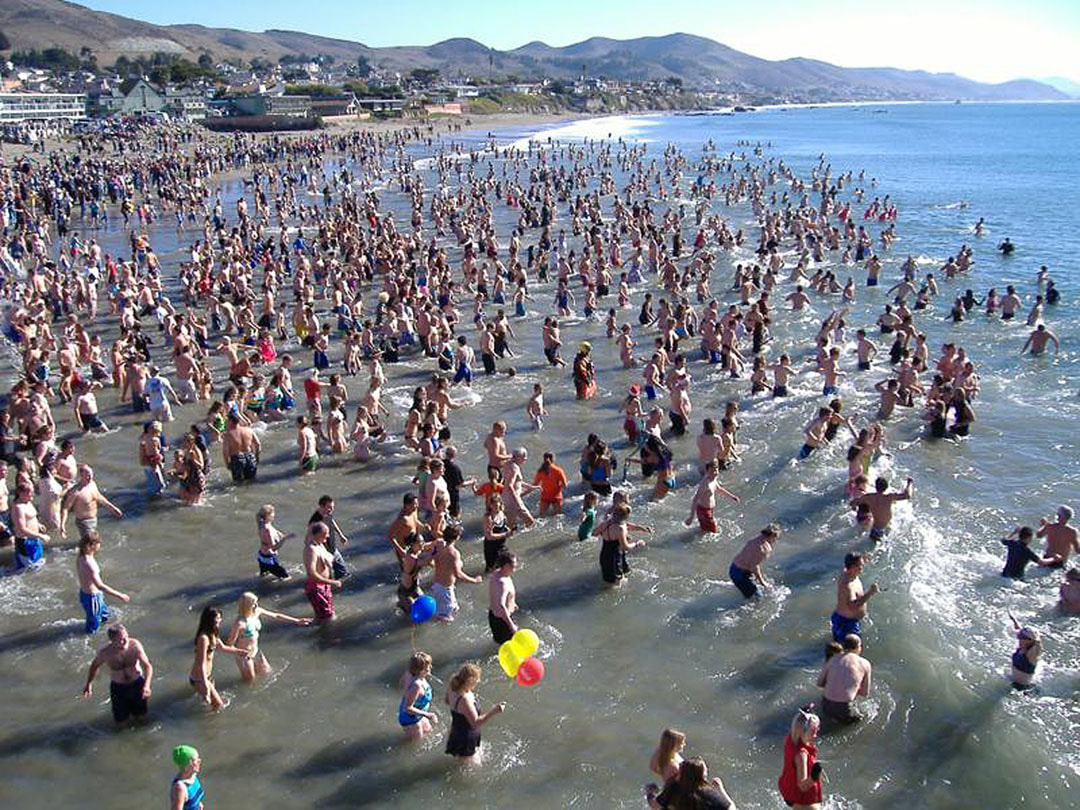|
The next town north of Morro Bay is a small seaside town called Cayucos, which hosts an annual Polar Bear swim meet every year at noon on January 1, New Year’s Day. Locals and visitors brave cold weather to dive into 54˚ ocean water. No wet suits are allowed. If you are in the area, stay overnight, and get out there early to find a spot on the pier for an aerial photograph of thousands of crazy people running into the surf. Photographers line the full 953-foot length of the pier. I was a little late arriving but managed to squeeze in for a photo of the action.
Along roads through the Palouse are some great old barns and many good places to stop and photograph patterns of wheat fields. Look in every direction and you’ll see scenes as ephemeral as the light, the time of day, and the movement of clouds across the sky. The landscape changes from rocky, pine-covered forest to rolling hills covered with wheat fields. Watch for old windmills along the road. Stop and climb up any hill along Martin Road. You’ll find a view of sweeping wheat fields receding into the distance.
The Joshua tree is a symbol of the Mojave Desert, growing in large stands across higher elevations of Southern California deserts. This strange-looking tree is not a tree at all but a giant member of the lily family, its branches covered with needle-sharp daggers. Like the saguaro cactus of the Sonoran Desert, Joshua trees are often featured prominently in desert landscape photography of the Mojave. Out in the middle of Southern California, not far from Palm Springs, is one of the best places to find great numbers of mature yucca brevifolia, in Joshua Tree National Park. There are many other reasons to visit and photograph this fascinating part of the desert.
Small lakes high in the mountains above Kings Canyon National Park are great destinations for a day hike or an overnight backpacking trip. Follow the signs from Generals Highway to the Wolverton Trailhead. One mile up the ridge, the trail reaches Wolverton Creek where I was slowed by many small cascades dropping through the forest. Each photo required seven bracketed exposures to capture the extreme range of morning light on the water against a dark ponderosa forest beyond. The only way to capture scenes like these is with HDR techniques.
The main reason to visit Sequoia National Park is to photograph the giant sequoia. The best groves and the largest and oldest living trees that are easily accessible are located in the Grant Grove area and farther south in the Giant Forest area between the General Sherman tree and Moro Rock. Kings Canyon appeals to hikers. The wild river and the waterfalls are worth a few days for photography. When you are planning your trip, go online and buy a trail guide with maps and descriptions – a hiking guide to these parks that ranks trails as Easy, Moderate, or Difficult and breaks them down by location. You can quickly find all the easy hikes into Sequoia groves or hikes to waterfalls, lakes, or meadows.
|
BlogNotes and images from Bob Hitchman. Archives
July 2024
|





